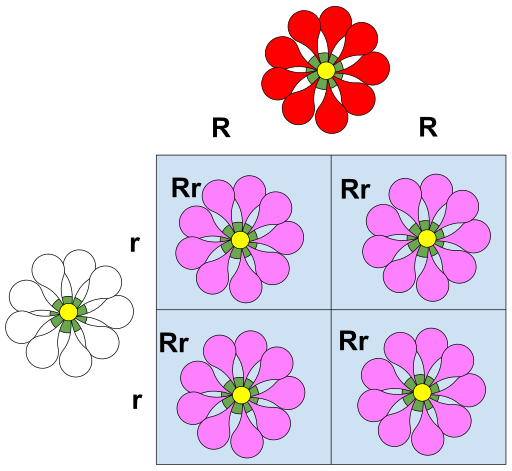Codominance
Codominance is where two alleles are neither dominant nor recessive to one another, so the trait they code for shows up in the organism equally. We write the alleles in exclusively codominant traits by using a capital letter for the trait and superscripts for the alleles. For example, the chicken feather color is a codominant trait. The trait is feather color, represented by an F. The variations of the feather color are black (B) and white (W).
One important note about codominance is that the heterozygous state FBFW produces a unique phenotype of speckled (white and black feathers).

Problem #1:
Black and White feathers are codominant to each other. Cross a heterozygous black and white feathered Rooster (FBFW) with a black and white feathered Hen (FBFW).

Incomplete Dominance
Assume you were to mate a red carnation with a white carnation. According to Mendel’s principle of dominance, all of the offspring will have red flowers. But, the offspring will not have red flowers, they will have pink flowers.
What? Does this mean the blending theory is correct?
The blending theory is not correct because two pink carnations can produce carnations with red or white flowers. Therefore, carnation flower color is another pattern of inheritance called incomplete dominance. Incomplete dominance is the situation in which one allele/trait is not completely dominant over another. The heterozygous state (Rr) is a blending of the alleles that produces a third phenotype.

Problem #2
Red and white carnations are incompletely dominant, and pink flowers are produced in the heterozygous state (Rr). Cross a homozygous red carnation (RR) with a homozygous white carnation (rr).

Problem #3
Cross two pink carnations.
